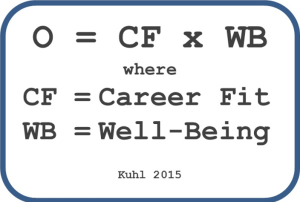 One of the first lessons I learned as a freshman philosophy student was “Define your terms!” In the spirit of fulfilling that admonition, this page provides quick ‘n’ dirty definitions of key terms and concepts tackled in this blog. The body of the blog is devoted to spelling out and linking these things in detail, but if you’re looking for an overview, you will be either thrilled or completely baffled by this summary.
One of the first lessons I learned as a freshman philosophy student was “Define your terms!” In the spirit of fulfilling that admonition, this page provides quick ‘n’ dirty definitions of key terms and concepts tackled in this blog. The body of the blog is devoted to spelling out and linking these things in detail, but if you’re looking for an overview, you will be either thrilled or completely baffled by this summary.
Part of the impetus for the Achieving Exponential Performance project was the realization that numerous researchers and authors across diverse disciplines are discussing the same core concepts, but using slightly different terminology. This page begins by tackling some essential, but necessarily complex concepts that have grown out of my effort to synthesize these concepts. An alphabetical listing is provided later in the page. In both sections, I will highlight sources and synonymous usages.
NOTE: this page is still under construction! If you have questions, please leave a comment, and I’ll be delighted to get back to you.
~ ~ ~
KEY CONCEPTS
6 Axioms for Achieving Exponential Performance
You are not the center of the universe, but…
A.1: Self-Awareness. You experience and explain the universe from your own unique perspective.
A.2: Self-Control. You are the only person in the universe that you can control, and you are the only person who can control you.
A.3: Choice. You always have the power to choose.
A.4: Collaboration. You are more likely to achieve your goals (and enjoy the process) when you work with others in a way that maximizes their strengths as well as yours.
A.5: Congruence. You are more likely to consistently make good choices and collaborate effectively in an environment that aligns with your strengths and your driving purpose.
A.6: Accountability. You are accountable for your impact on the universe.
What does it mean to be a self-energizing leader?
You become self-energizing when you work and live in an environment that fosters a virtuous cycle, where things tend to get better and better (the opposite of a vicious cycle, where things tend to get worse and worse). In this environment, the more you are able  to flourish personally while achieving high performance in your career, the more motivated you are to invest even more effort, which yields an even greater sense of well-being and accomplishment.
to flourish personally while achieving high performance in your career, the more motivated you are to invest even more effort, which yields an even greater sense of well-being and accomplishment.
Creating this kind of environment, called a Congruent Opportunity, requires strong self-awareness and self-management. Additionally, it requires mutually beneficial alignment with the other people with whom you share your environment. A self-energizing individual magnifies his or her satisfaction and capacity by helping those others improve their own self-awareness and self-management; that is, by serving as a self-energizing leader and role model.
What is a congruent Opportunity?
A Congruent Opportunity is an environment that allows you focus your life and your career on things that have meaning to you, and to make the very most of the specific strengths and talents that you have while minimizing any friction that might reduce your productivity and your sense of fulfillment. At the simplest level, you are in a congruent opportunity when you feel that your natural interests, talents, and sense of purpose are a good “fit” to the requirements of your environment.
 A more robust understanding of this concept requires an exploration of the specific factors of the Performance Equation, in the Career Fit sense, and the Well-Being Theory, as the overarching goal for a life well-lived—highlighted in bold below:
A more robust understanding of this concept requires an exploration of the specific factors of the Performance Equation, in the Career Fit sense, and the Well-Being Theory, as the overarching goal for a life well-lived—highlighted in bold below:
A congruent opportunity is an environment in which you live and work where:
- You are rewarded for, and experience engagement by
- investing maximum effort in using your strongest talents
- to achieve accomplishments that are meaningful to you
- while maintaining relationships that are mutually beneficial and fulfilling, and
- enjoying the positive emotions that result from these activities, interactions, and achievements.
Additionally, you achieve true exponential performance only when all of these elements are in optimal balance…as you perceive it. One person’s congruent opportunity could be another person’s worst nightmare!
What is the Performance Equation?
The Performance Equation was developed by Dr. John C. Marshall, founder of Self Management Group. This formula shows the key elements required for performance in the workplace, where:
 T = Talent, including both inherent traits and trainable skills, knowledge, and ability
T = Talent, including both inherent traits and trainable skills, knowledge, and ability
E = Effort, including both attitude (habits of thought) and action (habits of behavior)
O = Opportunity, the setting in which you are deploying your Talent and effort, including the actual job description and role expectations, the organizational culture, and
P = Performance, delivering on the requirements and expectations of the job
Note that this formula is expressed as a multiplication equation: if any of the three is missing—that is, equal to zero—then the result is also zero. Conversely, when all are present at high levels, the overall result grows larger.
Dr. Martin E. P. Seligman, one of the founders of Positive Psychology, developed the Well-Being Theory and discussed it at length in his book, Flourish. According to Dr. Seligmen, well-being is a construct, made up of the following five specific, measureable elements, none of which by itself tells the whole story:
- Positive emotion (such as happiness, life satisfaction, pride, amusement, inspiration)
- Engagement (optimal experience; that sense of being totally absorbed in what you are doing)
- Relationships
- Meaning and purpose
- Accomplishment
 Note: Expressing Well-Being Theory as an equation is my own visual device, not Dr. Seligman’s. So don’t blame him.
Note: Expressing Well-Being Theory as an equation is my own visual device, not Dr. Seligman’s. So don’t blame him.
MORE TO COME…
~ ~ ~
ALPHABETICAL LISTING OF SELECTED TERMINOLOGY
Coming soon…
Autonomy
Effort
Engagement
Mastery
Meaning
Opportunity
Positive Emotion
Purpose
Relationships
Talent
